This Shop Uses an Old-World "Three Olives" Machine to Do Period Restorations
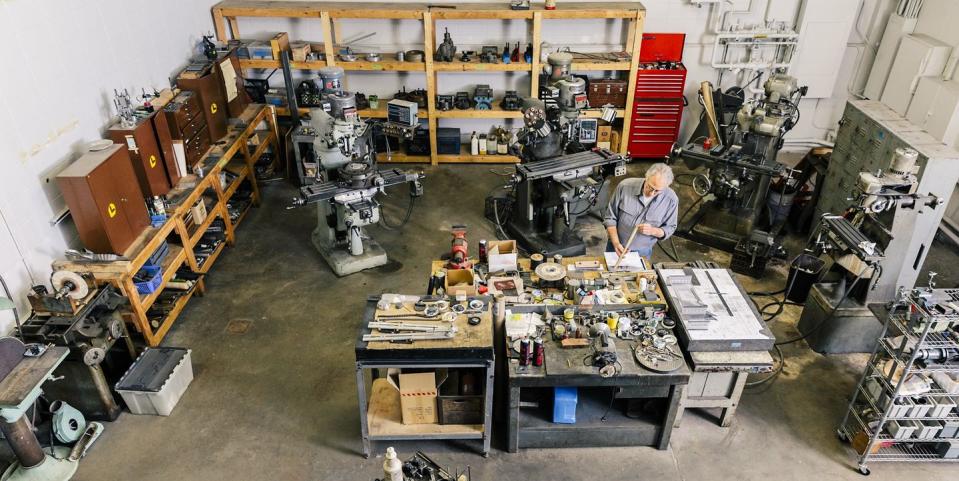
Some of the best restorers are a bit off the beaten track. Take David Cooper’s shop, Cooper Technica, in Bristol, Wisconsin, about 65 miles northwest of Chicago. Cooper focuses on pre-World War II French and Italian custom coachwork, and is probably the only American restorer with a second restoration shop in France.
This story originally appeared in the February 2020 issue of Road & Track.
Cooper Technica has three distinct specialties: custom metal shaping, vintage paint work, and Cotal electromagnetic and Wilson pre-selector gearboxes. The shop has been in business for 30 years, and Cooper comes from a line of machine builders—his family’s business was a machine shop that focused on custom work. When Cooper started racing vintage cars, he bought a Porsche 356 that required restoration work; that work became his personal project. “When it needed parts that were no longer available,” he says modestly, “I started making them myself.” After that, he began crafting parts for other people.
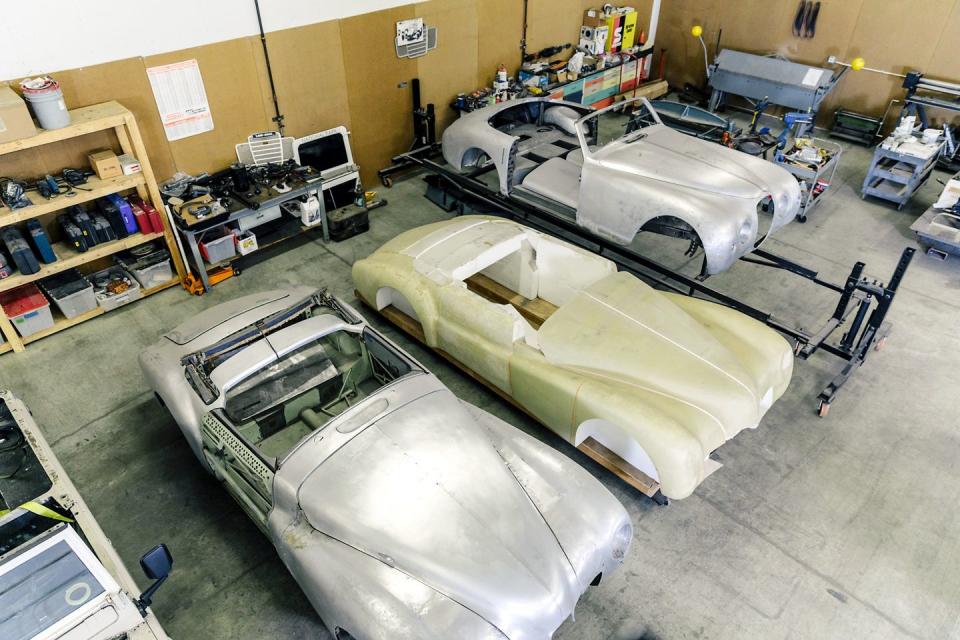
“One of my projects was a nickel-plated brass part that had been missing from a Bugatti Type 35B,” Cooper says, explaining that he found in old Bugatti literature a record of the original metallurgy. He then located the correct brass stock—a material not commonly used today—machined the part to match, and then had it nickel-plated. Not long afterward, a friend asked him to mechanically restore a BMW 328. Two other jobs quickly followed, and Cooper had to rapidly set up a shop and acquire tools. Eventually, he started doing the bodywork “because I couldn’t find anyone who would do the work to my standards.”
Shortly after that, Cooper transitioned to using a little-known, old-world French panel-forming device called a “three olives” machine. The 1930s-era metal-shaping machine resembles two giant toothpicks piercing six large motorized steel rollers. The top three rollers are convex, olive-shaped; the bottom three are concave. Two workers, one on each side, feed raw, flat sheet metal between the rollers, often drawing the part through multiple times until the requisite shape is formed.
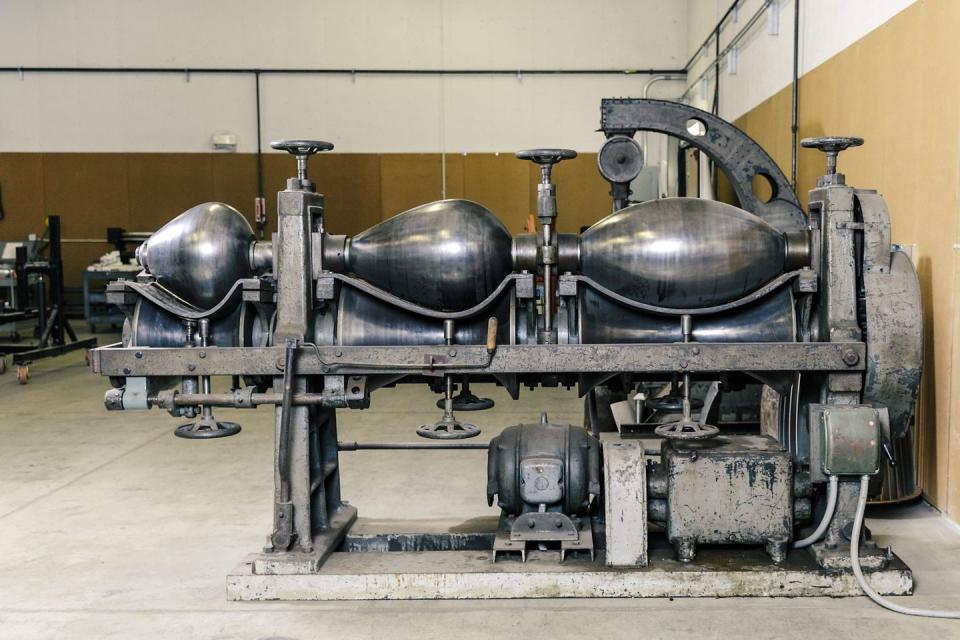
“These machines were originally developed in the mid-1800s to make tin cans,” Cooper explains. “Because they could form large, complex curved shapes in both steel and aluminum, they were adopted by French coachbuilders and sheet-metal fabricators.”
After Cooper hired a French craftsman who had been trained on this rare device, he acquired two of these machines—one to be used in France, the other destined for Wisconsin. In period, to build a custom body, a French carrossier would fabricate a maquette, or “fitting” buck, to establish the car’s shape based on designer drawings. As pieces were shaped on the three olives machine, the craftsman would test individual part fits on the buck. There were also “hammer” bucks where workers would pound and shape the panels on the buck itself.
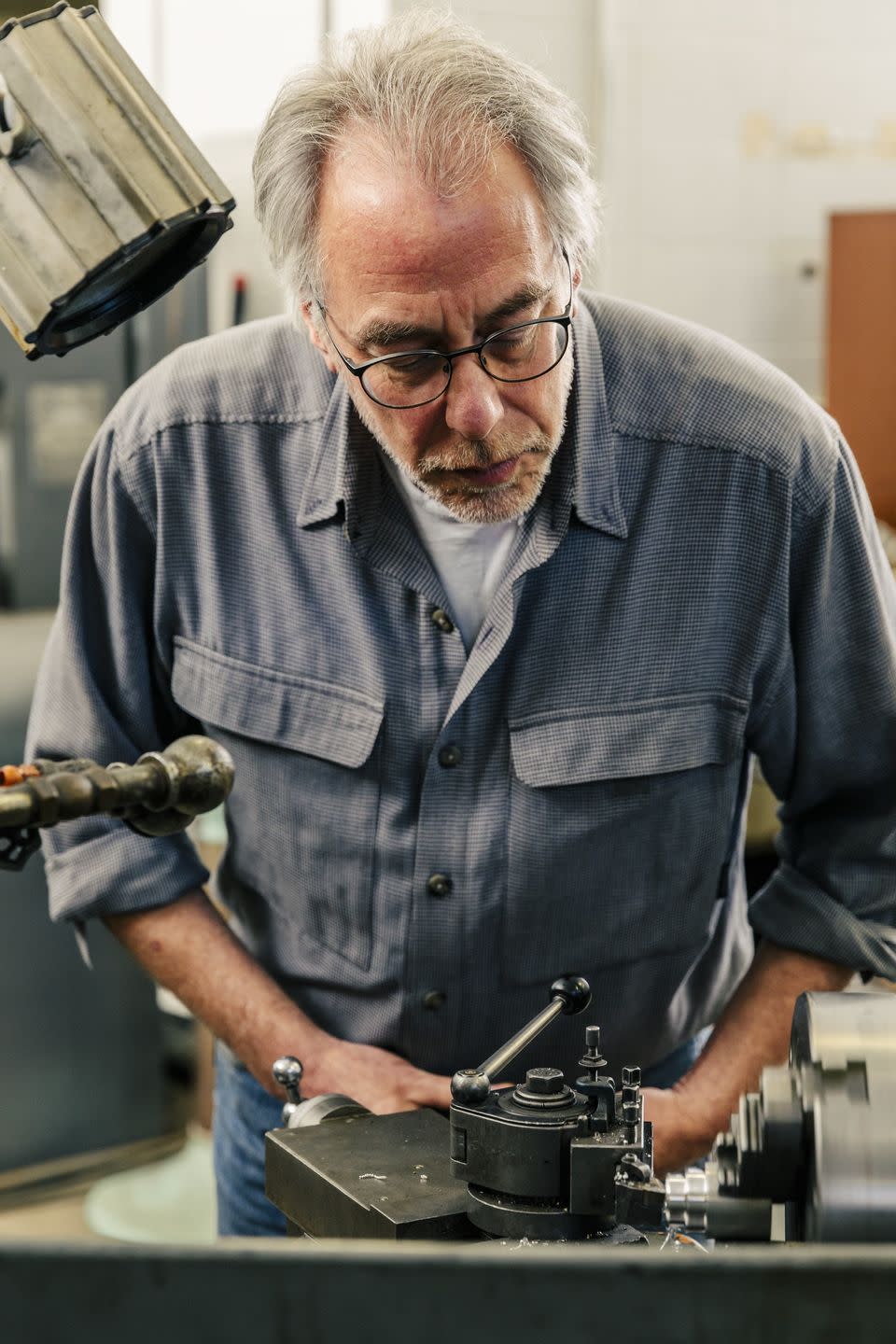
“Major French coachbuilders like Letourneur and Marchand, Figoni and Falaschi and Henri Chapron, and a few Swiss ones, all used this machine,” Cooper says. “But the French ateliers kept it a secret and didn’t permit photographs inside their shops. They didn’t want their techniques known. This machine allowed them to make much more complex, intricately curved, and larger shapes for their cars. And they could do this relatively quickly. In contrast, it would have been a lot of work for a craftsman with an English wheel to fabricate the body for a large, curvaceous car like a Bugatti Atalante. With an English wheel, they had to make the individual panel parts smaller, then carefully weld them together. For competitors in other countries, working without this machine, panel shaping of complex curves was difficult and very time-consuming.”
Cooper Technica has also developed unique processes for analyzing vintage automotive paint layers so that the correct original color for a classic car can be determined and mixed. It’s almost like studying the growth rings on a tree. A current project involves analyzing myriad layers of paint on a 1914 Peugeot twin-cam racer owned by a prominent race-car collector. A century ago, this historic car competed in several Indianapolis 500s.
“We have some historic photos and documentation for this car, but they are black and white, so they don’t show the original colors,” he says. “Still, studying the photographs taken in various time periods, we’ve been able to date every photo we have, and that has assisted our analysis.”
From a microscopic laboratory examination of the paint layers on the car, much more can be learned.
“We were able to determine all eight different times the car was repainted over the last 100 years,” he says. The original 1914 finish was brushed on, the linseed oil and copal resin-based paint formulated to leave no visible brush strokes. “We know that, in 1919, the Peugeot was repainted in a glossier finish, which was done at the time by coating the paint with varnish. Varnish was the clear-coat of 100 years ago,” Cooper says.
Next, the restorers will strip the car and repaint it the way they know it was done in period. This type of work is more common in Europe, but people are starting to do it in the United States.
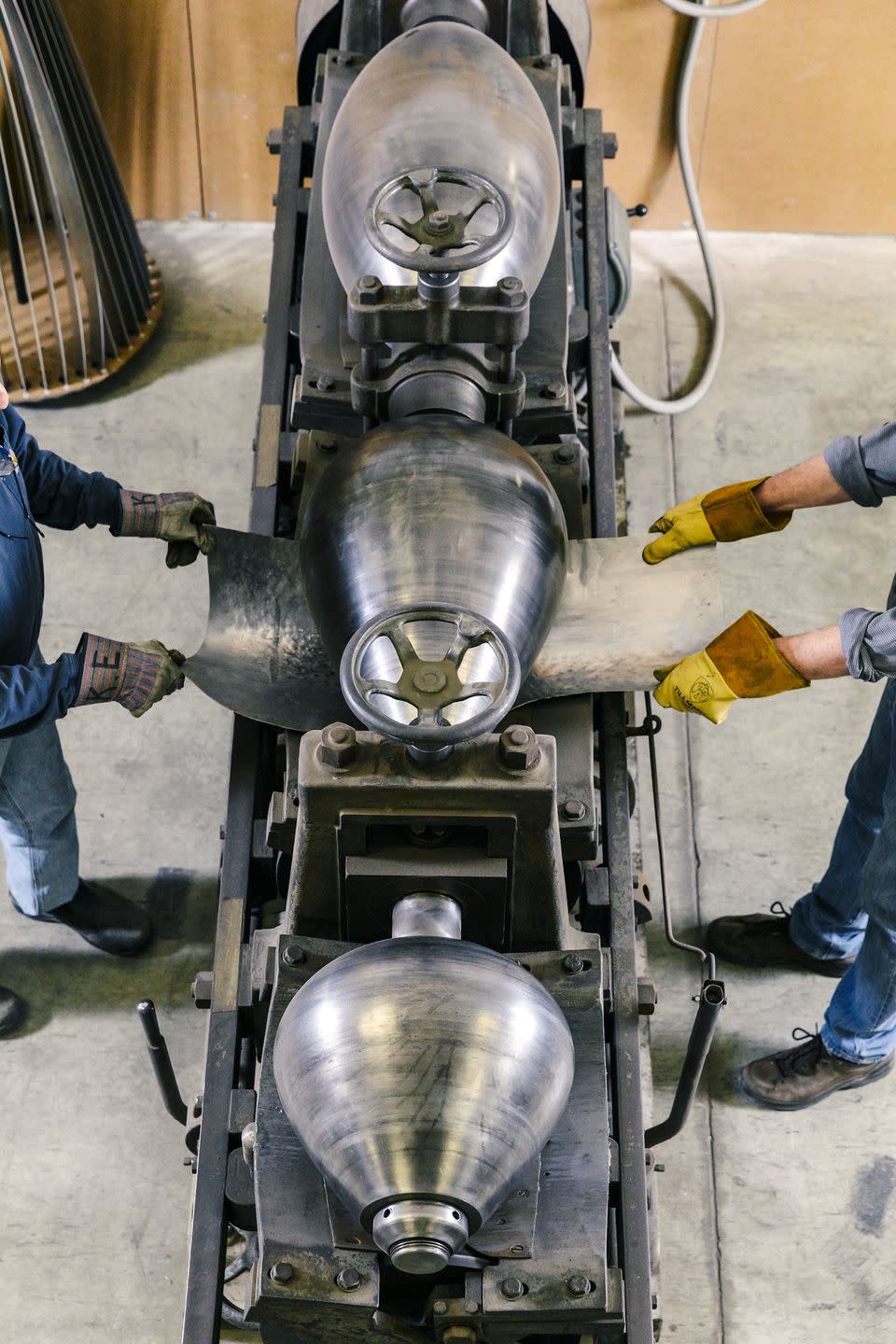
Cooper’s shop not only provides expertise in vintage metal-shaping and paint analysis, it offers maintenance and repair on complex Wilson and Cotal electromagnetic and pre-selector gearboxes. Cooper is probably the only such expert in the U.S. These quick-shifting transmissions, optional in a few luxury, high-performance cars between the wars, were very advanced for their era and require specialized knowledge to make them function properly.
Cooper says that, for him, the most important principle in restoration is authenticity. “Assuming we have a car that cannot be preserved ‘as is’—for example, if it has been already restored or modified at some point in its history— I believe that we should restore it precisely as it was, or as close as we can get to that goal, using the same techniques, methods, and materials they had at that time.”
You Might Also Like

 Yahoo Autos
Yahoo Autos 